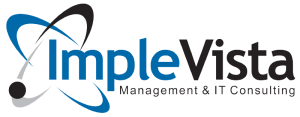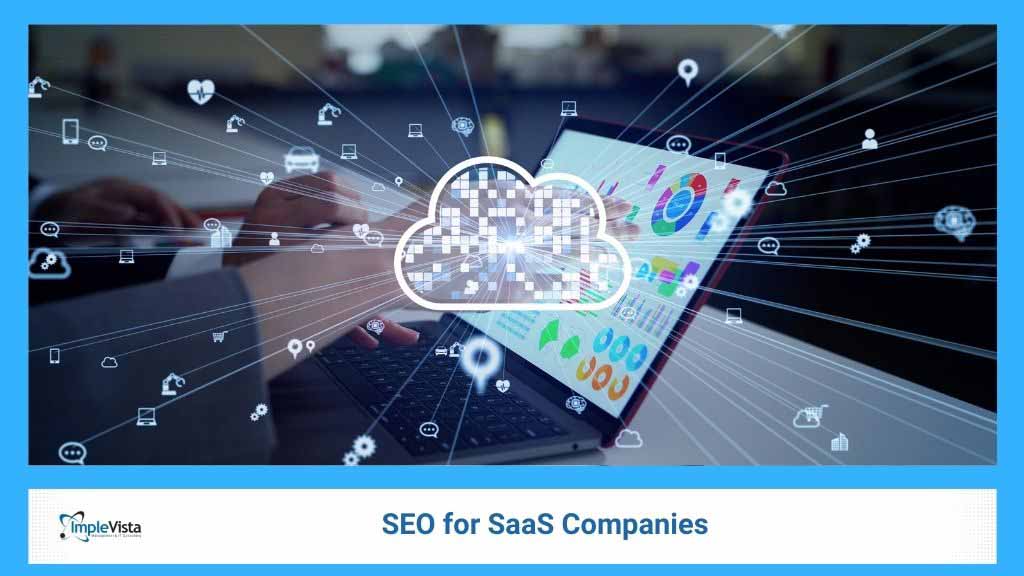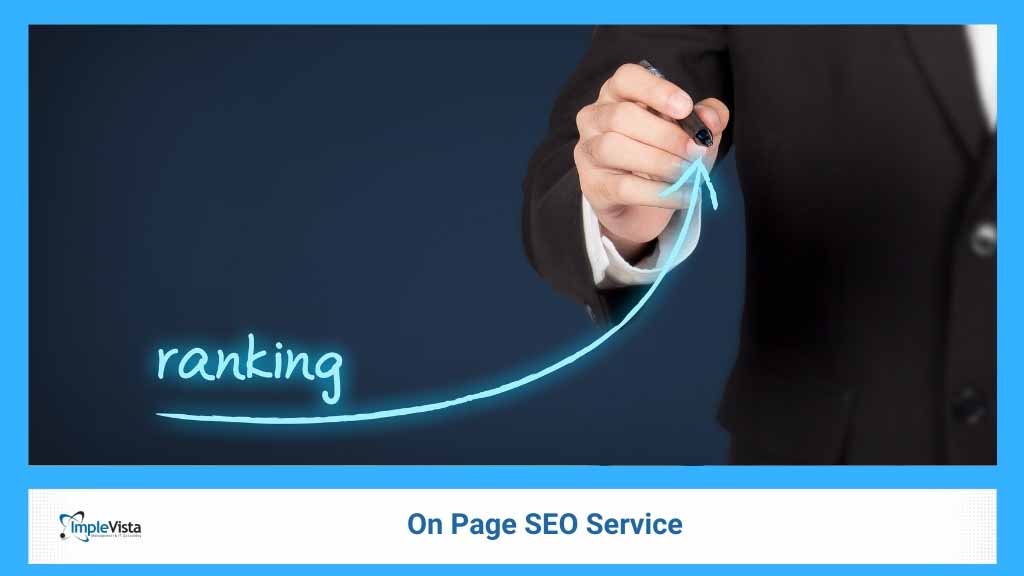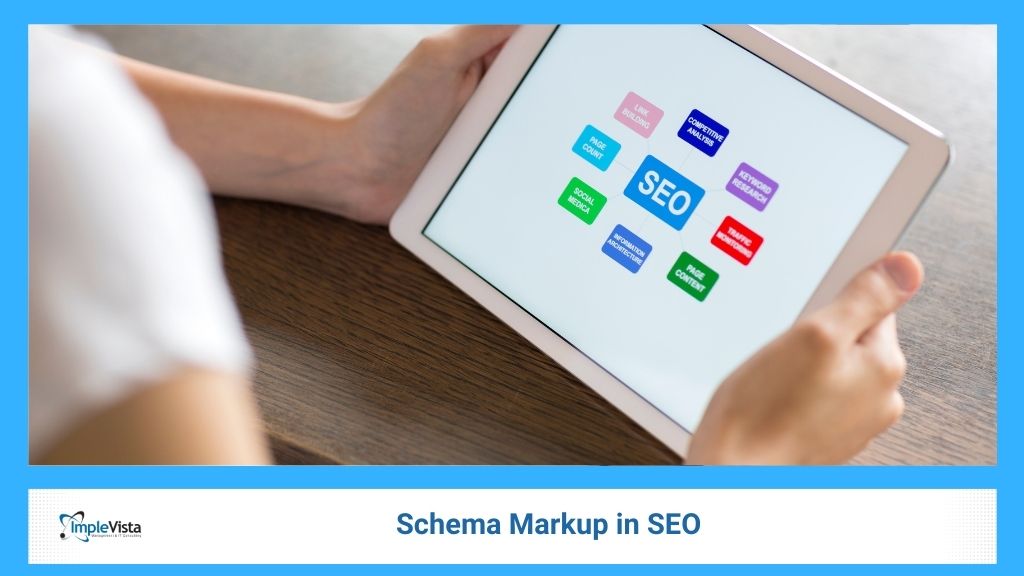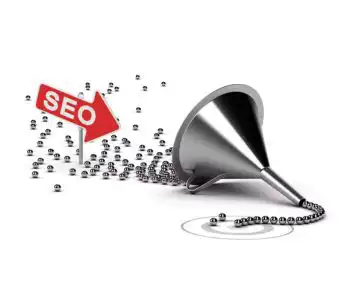Software-as-a-Service (SaaS) companies operate in a booming global market and face fierce online competition. To stand out, SaaS businesses must rely on search engine optimization (SEO) to attract targeted visitors and sign-ups. By focusing on SEO for SaaS companies, businesses can build sustainable, scalable growth while reducing costly paid acquisition.
In fact, organic search traffic for SaaS brands has compounding effects over time – every high-quality content piece and backlink added can lead to exponentially greater visibility. This guide explains what SaaS SEO is, why it matters, and how SaaS companies can implement effective SEO strategies (including local SEO and “seo service in Bangladesh” if targeting that market).
One key reason SEO is critical for SaaS firms is cost efficiency. Paid ads (PPC) can be effective but grow expensive quickly. SEO, by contrast, builds organic momentum that compounds – over time, the more your site ranks and gains trust, the more traffic and sign-ups you’ll earn without extra ad spend.
Top SaaS companies like HubSpot and Pipedrive swear by content marketing and SEO because early efforts pay off massively later. For example, with the global SaaS market projected to top $232 billion by 2024, even small share gains from SEO can translate to huge business impact. In short, SEO for SaaS companies drives qualified leads, builds brand authority, and lowers customer acquisition cost (CAC) over the long run.
What is SaaS SEO and Why It Matters
SaaS SEO is the process of optimizing a SaaS website to rank higher in search results and attract its ideal customers. In practice, it includes traditional SEO elements (keyword research, on-page optimization, technical fixes, link building) tailored to the unique SaaS context. A key difference is focus on user intent: SaaS SEO targets potential users looking for solutions, demos, comparisons or pricing (not just one-time purchases).
Because SaaS products often have long sales cycles and subscription models, SEO efforts emphasize educating and nurturing prospects through content. In other words, SaaS SEO is about ranking for queries that real buyers use at each stage of the funnel – from “How to solve [problem]” (awareness) to “[Product] vs [Competitor]” (consideration) to “best [product type] software” (decision).
According to industry experts, SEO is absolutely essential for SaaS brands. As Neil Patel notes, “SEO for SaaS companies must take into account the unique features of the industry”. In practice, this means building a search strategy focused on your ideal customer personas and their pain points, not just generic keywords. For example, SaaS companies often compete with big review sites (like G2 or Capterra) that dominate rankings.
Thus, a smart SaaS SEO strategy produces better, more authoritative content that still targets relevant search terms. When done well, SaaS SEO brings in high-intent organic traffic – visitors who often convert faster and with less ad spend than other channels. In fact, studies show SEO can dramatically increase brand visibility, credibility, and inbound leads for SaaS firms.
Benefits of SEO for SaaS Companies
Investing in SEO yields multiple benefits for SaaS businesses:
- Sustainable, Scalable Growth: SEO creates a predictable pipeline of organic leads. Top-of-funnel content (blogs, tutorials, guides) drives awareness continuously. Over time, compounding SEO efforts mean more traffic and sign-ups without ongoing ad spend.
- Lower Customer Acquisition Cost (CAC): By reducing reliance on paid ads, SEO lowers the cost of each new lead. Neil Patel points out that SaaS firms with robust SEO see “much lower CPA” (cost per acquisition) than those relying solely on PPC.
- Stronger Brand Authority: Ranking well for key industry terms establishes thought leadership. As your SaaS content appears at the top of search results, your brand becomes the default solution in buyers’ minds. This authority also helps in other channels – prospects who saw your content are more likely to trust your paid ads or demo offers.
- Higher Conversion & Retention: Good SEO content doesn’t just attract clicks; it educates users. By answering user questions and solving problems through content, SaaS companies improve onboarding and user satisfaction. This boosts customer lifetime value and reduces churn, since well-informed users stay longer.
- Omnichannel Impact: Content created for SEO can be repurposed across marketing. Blog posts become email newsletters, social media posts, or webinar topics. According to Neil Patel, SEO “helps to convert prospects from other channels” because that same content nurtures leads in email, PPC campaigns, or sales calls. In practice, a top-ranking blog can double as training material or a sales resource for your team.
In short, SEO for SaaS companies is not optional – it’s a foundational marketing strategy. It builds an inbound engine that supports every stage of growth.
How SaaS SEO Differs from Other SEO
While the mechanics of SEO (keyword targeting, technical fixes, link building) remain, SaaS SEO has unique challenges:
- Buyer Personas & Long Funnels: SaaS buyers (especially B2B) go through research-heavy journeys. Unlike consumers making quick purchases, SaaS customers research multiple options over weeks or months. This means SaaS SEO strategies must target every stage of that journey. You need top-of-funnel content (industry insights, how-to guides), mid-funnel content (feature comparisons, case studies), and bottom-funnel pages (detailed product pages, pricing). Each content piece should be optimized for the right keywords reflecting the buyer’s intent at that stage.
- Global Competition: SaaS products often sell worldwide. Your competitors likely include international brands with big budgets. As Neil Patel notes, SaaS companies often compete with large, global players and review sites with high domain authority. This means SaaS SEO efforts must focus on niche differentiation (e.g. targeting specialized use-cases) and building authority (e.g. earning links) to outrank bigger sites.
- Emphasis on Conversion: Because SaaS relies on lead generation, SaaS SEO is highly conversion-driven. You’re not just ranking for traffic; you want sign-ups, trials, or demos. This requires a focus on conversion optimization alongside SEO. For example, a blog post should include calls-to-action (CTAs) to trials, and landing pages must use persuasive design. The SEO strategy must align closely with sales goals.
- Technical Complexities: Many SaaS sites are web apps with login areas, dynamic content, and custom code. Ensuring search engines can crawl and index the right pages (for example, by configuring robots.txt, sitemaps, and server-side rendering) is critical. Technical SEO is often more complex than for a static site.
To handle these differences, SaaS SEO requires a specialized approach. As industry experts emphasize, “SaaS SEO is all about personas and problems,” focusing on solving user questions rather than just stuffing keywords. Implevista’s SEO experts recommend mapping out the entire customer journey and creating content and optimizations for each step.
Keyword Strategy and Content Planning
- Identify Buyer Personas. A cornerstone of SaaS SEO is understanding who you are targeting. Create detailed personas (e.g. “Marketing Manager at a tech startup” or “Finance Director at a retail chain”). For each persona, list their pain points and how your SaaS solves them. This guides keyword research.
- Funnel-Aligned Keywords. Break keywords into top/middle/bottom funnel:
- Top-of-Funnel (ToFu): Broad informational terms (e.g. “what is CRM software?” or “how to manage social media ads”). These searches signal early interest. Address them with in-depth blog posts or guides. (SEO pro tips: answer the question fully, use schema FAQ or how-to markup to stand out.).
- Middle-of-Funnel (MoFu): Evaluation terms (e.g. “best CRM tools 2025” or “CRM vs ERP software”). Here prospects compare solutions. Create comparison pages, case studies, or product feature posts. This stage often generates warm leads.
- Bottom-of-Funnel (BoFu): Purchase intent terms (e.g. “Buy CRM software” or “Marketing CRM pricing”). Optimize your product/pricing pages for these keywords and ensure they rank, since these bring the highest conversion.
A detailed keyword list around each persona’s challenges is crucial. As Implevista’s SEO service notes, comprehensive keyword research targets “high-volume, low-competition keywords” your audience is searching for. Continually expand and refine this list – SaaS landscapes evolve quickly.
- Content Clusters and Semantic SEO. Modern SEO favors topic clusters: interlinked content pieces organized by theme. For example, a SaaS blog might have a pillar post on “SaaS Marketing Strategy” linking to subposts on “Content Marketing for SaaS,” “SaaS SEO basics,” etc. Using related keywords and synonyms helps search engines understand your site’s expertise in that area. Implevista’s guide on Semantic SEO explains that focusing on word meaning and context (not just exact keywords) is essential. For SaaS content, ensure you use natural language and related terms. For instance, a CRM software page should mention synonyms like “customer management,” “lead tracking,” etc., and cover topics users expect (e.g. benefits, integrations).
- Fresh & Up-to-Date Content. Search engines favor current, relevant content. Regularly update blog posts and guides to reflect new features or industry changes. Customers expect the latest information about SaaS tools. Consistently adding content also signals to Google that your site is active, improving crawl frequency and ranking potential.
On-Page and Technical SEO for SaaS
On-Page SEO: Ensure every page has a clear title tag, meta description, and headings that include your target keywords naturally. Write concise meta titles/descriptions that entice clicks. For example, an H1 like “How [Product] Helps Small Businesses Manage Sales” is better than a generic title.
Each page’s content should directly answer the search intent. Use bullet points or numbered lists to break complex information (which also boosts SEO readability). Add internal links between related SaaS topics (e.g. blog to product page) to help search engines discover all pages.
Implevista’s SEO services emphasize thorough on-page work: optimizing tags, headings, and improving site speed and mobile responsiveness for better UX. Fast, mobile-friendly pages are critical – Google’s ranking algorithm increasingly favors sites with excellent Core Web Vitals. Compress images, enable browser caching, and use responsive design to ensure pages load quickly.
Technical SEO: This is vital for complex SaaS sites. Ensure all important pages are crawlable (no blocking robots.txt). Use an XML sitemap listing your core pages and submit it to Google Search Console. Fix broken links and redirect chains (Implevista conducts technical audits to catch these issues). Always serve your site over HTTPS and implement schema markup where relevant.
Schema (structured data) tells Google exactly what your SaaS content is about – for example, use SoftwareApplication markup on product pages. As Implevista explains, schema “helps search engines understand your website’s content better, resulting in improved rankings and enhanced visibility”. For SaaS, consider schema types like Organization, FAQ, or even “Article” for blog posts to enable rich snippets.
Also pay attention to site architecture: organize content in logical silos (e.g. /blog/, /features/, /pricing/). Deep pages (more than 3-4 clicks from home) may get crawled less – use internal links to surface them. Finally, monitor Google Search Console for any crawl errors or indexing issues, and fix them promptly. Implevista’s experts stress the importance of a secure, crawlable site with no dead ends.
Content Marketing and Authority Building
High-Value Content: Content is the backbone of SaaS SEO. Write in-depth posts that genuinely help your target audience. This might include how-to guides, industry reports, case studies, and tutorials. For example, a SaaS accounting tool could publish a “2025 Guide to Cloud Accounting” (informational) and a “Case Study: Reducing CFO Workloads with [Product]” (social proof).
Original research or data can attract backlinks from other sites. Remember, “content that answers user intent” not only ranks better but also keeps visitors engaged.
Semantic SEO: As search engines use AI/NLP, optimize content for meaning. Use related phrases and cover a topic comprehensively. Implevista’s Semantic SEO guide notes that incorporating rich, contextual content helps algorithms better match queries. For instance, include relevant terminology, synonyms, and answer possible follow-up questions in your copy.
Link Building (Off-Page SEO): Earning quality backlinks boosts your SaaS site’s authority. Outreach to industry blogs, SaaS review sites, and tech publications to contribute guest posts or be featured. Sponsor industry events or partner with influencers to gain mentions.
Implevista emphasizes “acquiring high-quality backlinks from reputable websites,” which act as “votes of confidence” to improve rankings. Participate in SaaS communities (e.g. forums, Reddit, LinkedIn groups) and share valuable content (avoid spammy linking). Over time, these efforts increase your domain authority, helping you outrank larger competitors.
Content Distribution: Don’t just publish and forget. Share new content via email campaigns, social media, and SaaS newsletters. Freshly published posts can get an initial traffic boost this way, which signals search engines to index them quickly. Also consider repurposing content (e.g. turn a blog into a video or infographic) to reach wider audiences.
Leveraging Schema Markup and Technical Enhancements
Implementing schema markup is a powerful boost. Using schema.org tags (JSON-LD format) on your pages helps Google display rich snippets like FAQ drop-downs, review stars, or pricing info. For SaaS sites, useful schemas include:
- Organization/LocalBusiness: If targeting local markets, add NAP (Name/Address/Phone) and business details so your SaaS appears in local packs.
- Product/SoftwareApplication: Use on product pages to show software details, ratings, pricing, and more directly in search. This can markedly improve click-through rates.
- FAQ Schema: For common SaaS questions, implement FAQ schema so Google can feature your Q&A in results, driving traffic.
Implevista’s recent blog on schema notes that “rich snippets created using schema markup make search results more visually appealing,” which can significantly increase clicks. In short, adding the right structured data helps you stand out in search and captures qualified traffic.
Beyond schema, ensure your site performance meets modern standards. More than half of web traffic comes from mobile devices – make sure your SaaS site is fully responsive and optimized for smartphones. Core Web Vitals (fast loading, low layout shift) are now key ranking factors.
Use tools like Google’s PageSpeed Insights and Lighthouse to test and improve metrics like Largest Contentful Paint and Cumulative Layout Shift. The digital team at Implevista confirms they “improve site speed and mobile responsiveness” as part of on-page SEO, which every SaaS company should do to avoid losing visitors.
SEO Service in Bangladesh for SaaS Startups
For Bangladesh-based SaaS companies or global SaaS firms targeting South Asia, local expertise can be invaluable. “Seo service in Bangladesh” often implies a blend of global SEO knowledge with local market understanding. Implevista Digital Marketing, for example, is a top SEO agency in Dhaka that specializes in technical and content-driven SEO strategies.
Their team knows how to optimize for local intent (e.g. “CRM software Bangladesh”) and international terms alike. If your SaaS targets Bangladeshi clients or needs a nearby partner, choosing an SEO service in Bangladesh makes sense. They can address language nuances, local backlinks, and compliance (e.g. Bangladesh’s data laws) more effectively.
When choosing an SEO service in Bangladesh for your SaaS, look for:
- Expertise in SaaS/Tech: The agency should understand software solutions, subscription models, and B2B sales. Implevista, as a technology-savvy firm, provides customized strategies for software companies.
- Proven Results: Check case studies. A good agency will have success stories in related fields (even outside SaaS) showing measurable results.
- Holistic Strategy: Ensure they cover all SEO aspects (on-page, off-page, tech) and align with your marketing goals. As Implevista’s FAQ highlights, a comprehensive approach involves on-page, off-page, and technical SEO.
- Local + Global Reach: A Bangladesh SEO team should also be capable of optimizing for global audiences. They should know how to implement geo-targeting or multilingual SEO if needed.
By hiring a specialized SEO agency in Bangladesh with SaaS experience, you get both local insight and technical acumen. Implevista, for instance, offers a free SEO consultation to tailor strategies for your business.
Measuring SaaS SEO Success
To know if your SEO is working, track the right metrics:
- Organic Traffic: Use Google Analytics to see growth in unique visitors to your site (especially your blog and landing pages).
- Lead Generation: Monitor form submissions, trial sign-ups, or demo requests originating from organic channels.
- Keyword Rankings: Use tools like Google Search Console or a rank tracker to watch how targeted keywords (branded and non-branded) move over time.
- Engagement Metrics: Look at bounce rate, pages/session, and time on site for organic traffic. Good SEO content should engage users; a high bounce rate might mean content isn’t matching intent.
- Conversions & LTV: Ultimately, tie SEO efforts to revenue. Track the lifetime value of customers acquired through organic search vs. other channels.
Implevista’s analytics approach involves detailed reporting on “organic traffic, bounce rate, conversion rate, and keyword rankings”. Regularly reviewing these KPIs allows continuous optimization. For example, if a key blog post isn’t attracting clicks, experiment with a new title or add internal links to it. If technical issues appear (e.g. a spike in 404 errors), fix them immediately to avoid ranking drops.
Conclusion
SEO for SaaS companies is a long-term, high-impact strategy. By understanding your customers’ needs and aligning SEO tactics at each stage of the funnel, you can build a powerful lead-generation engine. Key takeaways: focus on persona-driven content, keep your site fast and crawlable, and leverage content marketing and schema markup to stand out in search. As the SaaS market grows, the companies that dominate will be those with strong organic search presence.
Ready to supercharge your SaaS growth with SEO? Contact Implevista Digital for a custom SEO strategy tailored to SaaS businesses. Explore our Search Engine Optimization services to see how we drive results. For ongoing tips and insights, subscribe to the Implevista blog or read related guides like “Understanding Semantic SEO”. Your SaaS company’s next growth phase could start with optimizing your search strategy today.
Related Links: Digital Marketing Services | Local SEO in Bangladesh | Semantic SEO Guide
FAQ about SEO for SaaS Companies
What is SEO for SaaS companies? SEO for SaaS companies means optimizing your SaaS website and content to rank highly in search results. It involves identifying the search terms your target customers use and crafting content (blogs, landing pages) that answers their questions. For SaaS, the goal is to attract qualified leads and trial sign-ups through organic search.
Why is SEO important for SaaS businesses?
SEO is crucial for SaaS because it drives sustainable, cost-effective growth. Unlike paid ads, organic search traffic compounds over time, delivering increasingly valuable leads. It also builds brand authority – when SaaS content consistently ranks in Google, your brand becomes more visible and credible among potential customers.
How is SaaS SEO different from regular SEO?
SaaS SEO differs mainly in focus. SaaS companies must cater to longer B2B buying cycles and specific user personas. This means creating content for every stage of the funnel (awareness, evaluation, decision) and focusing on conversion (e.g. trial sign-ups) rather than one-time sales. Technically, SaaS sites may also have more complex structures (web apps, logins) requiring extra technical SEO work.
What are key SEO strategies for SaaS companies?
Top strategies include thorough keyword research centered on buyer needs, creating high-quality content at all funnel stages, optimizing on-page elements (titles, headings, speed), and building relevant backlinks. For example, publish helpful blog posts (ToFu), detailed comparison pages (MoFu), and well-optimized landing pages (BoFu). Use schema markup to enhance listings and optimize technical performance for a seamless user experience.
How long does it take to see results from SaaS SEO?
SEO is a long-term effort. Typically, expect to see meaningful organic traffic growth in 6–12 months, though some keyword gains can appear sooner. Because SEO effects are compounding, patience pays off; each new content or backlink adds to your momentum. Keep in mind that highly competitive SaaS keywords may take longer, so mix in long-tail terms for quicker wins.
Should SaaS companies focus on SEO or paid ads?
Both have their place, but SEO provides a more sustainable return in the long run. Paid ads (PPC) deliver immediate visibility but incur ongoing costs. SEO reduces dependency on ads and builds enduring authority. Many SaaS firms use a mix: PPC to jump-start traffic and SEO to maintain ongoing growth. As budgets allow, shift more to SEO for lower cost per lead.
How does content marketing tie into SaaS SEO?
Content marketing is integral to SaaS SEO. The blogs, whitepapers, videos, and guides you create are the assets optimized for search. Good content attracts backlinks and shares, signaling relevance to Google. Neil Patel notes that SaaS SEO content is “multipurpose” – it not only brings organic traffic but can be repurposed for email campaigns, social media, and sales collateral. In short, producing valuable content fuels your SEO, lead gen, and brand authority simultaneously.
Is local SEO relevant for SaaS businesses?
It depends on your market. If your SaaS targets customers in a specific region (like Bangladesh or a city), local SEO tactics (Google My Business, local keywords, citations) can help you rank in regional searches. However, many SaaS products serve a global market, in which case focus on industry-specific SEO. Even then, including location pages or local partnerships can help capture any nearby customers.
Can small SaaS startups benefit from SEO services in Bangladesh?
Absolutely. Hiring a local SEO service in Bangladesh, especially one familiar with tech (like Implevista Digital), can fast-track your SEO. Experts there can optimize your site for Bengali and English keywords, handle local citations, and align SEO with Bangladesh’s emerging tech ecosystem. Startups often have tight budgets, so getting ROI on SEO (with local expertise) is very effective for growth.
How do SaaS companies measure the success of their SEO efforts?
Track both traffic and business metrics. Key indicators include organic website visitors, trial/demo sign-ups from SEO, keyword ranking improvements, and engagement metrics (bounce rate, time on page). Also measure how organic traffic converts: for example, how many leads or revenue came from search-initiated visits. Implevista recommends using analytics (Google Analytics/Search Console) to monitor traffic and user behavior. Regularly reviewing these metrics lets you fine-tune your SaaS SEO strategy for maximum impact.
